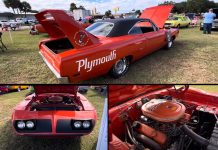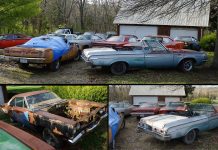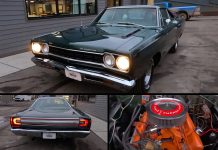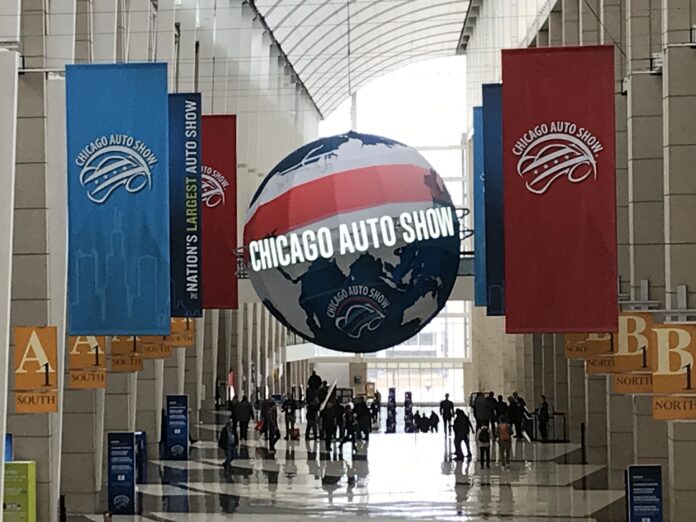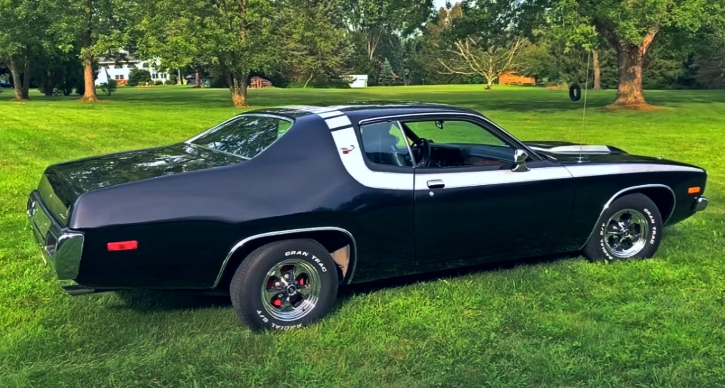The Chicago Auto Show is back, and it portends both a return to the new normal and a new way for auto shows, dealers, and automakers to connect with consumers. The abbreviated show will run for half the days and in half the space it used to, and there will be no food and drink allowed in the McCormick Place exhibit hall, show organizers and the City of Chicago announced Tuesday.
“While this marks the first large convention to take place since the COVID-19 pandemic began, we expect to welcome other conventions and tourist events this summer with safety precautions,” Chicago Mayor Lori Lightfoot tweeted this morning.
But there will be plenty of new cars and hands-on exhibits during the five-day summer showcase, and organizers hope for plenty of car shoppers and enthusiasts pent up from the pandemic. The Chicago Automobile Trade Association(CATA) plans to host up to 10,000 attendees at a time.
“We’re going to make sure that everyone has plenty of elbow room,” Dave Sloan, CATA President and Auto Show General Manager, said in an interview with Motor Authority. “We’re going to be following every safety guideline that has been laid out for us so that we can do it in a safe manner.”
Home to some of the largest conventions and tradeshows in the world, the sprawling McCormick Place campus just south of downtown Chicago typically hosts the Chicago Auto Show in February on 1 million square feet, in an indoor space that includes several indoor test tracks. From July 15-19, the Chicago Auto Show will take up about half of that, which works out to about 47 square feet per attendee, or nearly double the social distancing standard of six square feet around, according to Sloan’s math.
“It’s a tough thing to try and figure out,” Sloan said about the return of auto shows in general. “Everyone’s trying to figure out what’s best for them.”
The auto show as newsmaker was facing as uncertain a future as newsprint before the pandemic hit. Instead of competing for 20-minute slots in a day packed with debuts from rival companies, automakers were already experiencing greater control, more eyeballs, and ultimately a greater return on investment by having standalone product debuts in person and streamed live. The North American International Auto Show in Detroit tried to resuscitate interest by moving the show from January to June, but it was canceled due to the pandemic. Detroit estimated lost revenue of more than $500 million to the local economy due to the cancelation. It has been rescheduled for a third time to Sept. 24-Oct. 9.
It wasn’t just the automotive cradle of the U.S. that was flagging. The Geneva International Motor Show, which the BBC estimates to bring in $210 million, was postponed to March 2021, put up for sale, then canceled again. The future of Europe’s biggest automotive showcase remains in doubt.
Yet, there are signs of life in a return to the new normal. Two weeks ago, at Auto Shanghai 2021 taking place in the world’s largest car market, Lexus debuted the refreshed 2022 ES mid-size sedan, and Genesis, Volkswagen, Ford, and Audi vehicles made world debuts. Enthusiasts got a first look at the Jeep Wagoneer and Grand Cherokee L at the Atlanta Auto Show in mid-April, and the Twin Cities Auto Show moves outside to the Minnesota State Fairgrounds from May 15-23.
The Chicago Auto Show marks the first trade show to return to McCormick Place, and the last major domestic auto show to take place before pandemic restrictions gripped the country and rest of the world.
“It’s kinda cool because we were sort of the last ones in 2020,” Sloan said, referring to the full auto show that ran in February 2020.
The New York International Auto Show, which had been canceled last March because its host, the Javits Convention Center, was made into an emergency hospital similar to McCormick Place, is scheduled for late August as a full show. But the Chicago Auto Show, which claims to be the most well-attended consumer show in the country, represents an interesting case study in scale and possibility.
“Ours is unique in that we decided to do things a lot differently,” Sloan explained, by changing the time of year, limiting attendance, and including an outdoor component. “We thought wait a minute, what if…at the end of the day we take the test drive cars, clean them up, put ’em on display, we roll in a few food trucks, and maybe a couple breweries, and get some street musicians then we turn it into an automotive street festival.”
Permits are pending for the outdoor component, and in Chicago that could mean anything. What is certain is movement will be encouraged and masks will be required.
“People don’t need to be vaxxed but we’d love it if they did,” Sloan said. “They do have to be masked.”
Tickets for $13 ($10 for seniors and kids) must be purchased online in advance, and registrations are required for popular indoor exhibits such as Camp Jeep, which historically has hour-long lines that snake through the many brands of Stellantis (formerly known as FCA). Now, and for the Ram test track and outdoor test drives, attendees can register for a time slot and show up at the exhibit at their appointed time. There will be no demonstrations that gather crowds, such as the Ford Mustang dynamometer or staged product presentations, and there will be no food and drink allowed on the show floor, lest people use that as an opportunity to unmask.
The Chicago Auto Show runs from July 15-19, Thursday through Monday from 9am until 10 pm, at McCormick Place.



